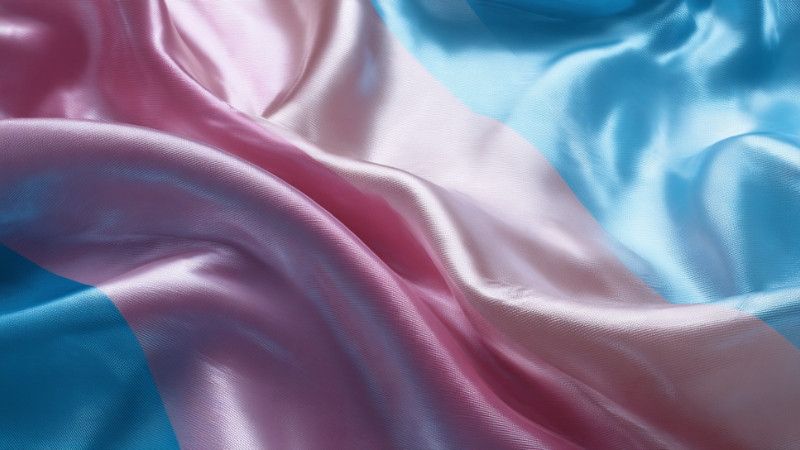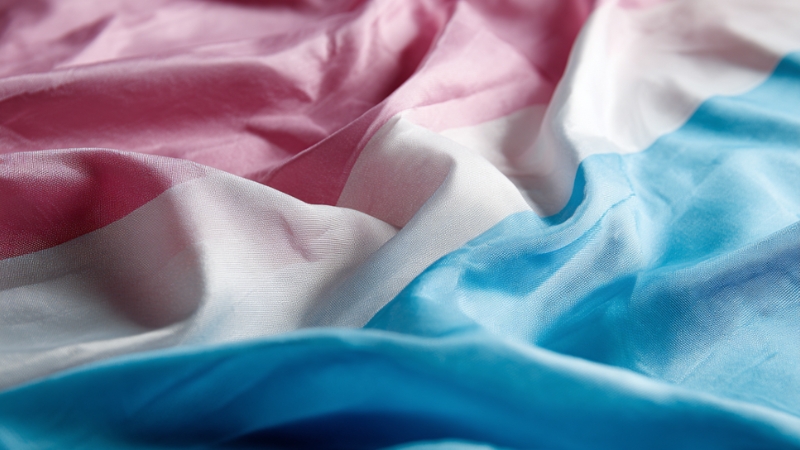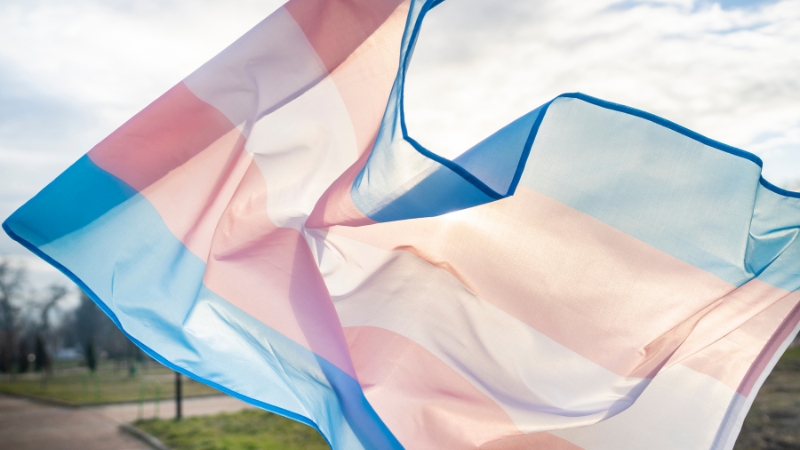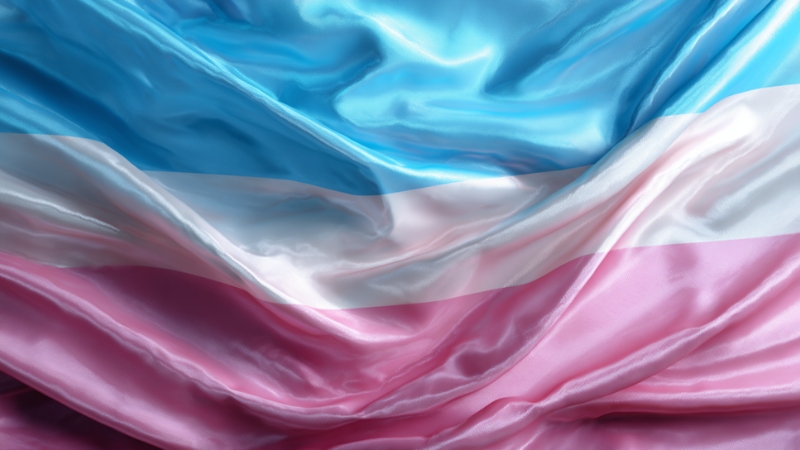The transgender pride flag is one of the most recognizable emblems in the global LGBTQ+ movement today. It flies at pride parades, rallies, and vigils, and it appears in classrooms, community centers, social media profiles, and even political events.
But many people still ask: when was the trans flag made, who created the trans flag, and what exactly is the trans flag mean?
The answer is straightforward: it was created in 1999 by Monica Helms, a transgender woman, activist, and Navy veteran. Her intention was to design a flag that was simple enough to be instantly recognizable yet meaningful enough to represent the complexity and diversity of the transgender community.
The Origins – When Was the Trans Flag Created?
The transgender pride flag was designed in August 1999. Monica Helms, who had served in the U.S. Navy before transitioning, wanted to create a symbol that could bring visibility to transgender people, unite them under a shared emblem, and communicate to the world that trans people exist in every community.
The first time the flag was shown publicly was in 2000, during the Phoenix Pride Parade in Arizona. Helms carried it herself, and its bold pastel colors stood out immediately.
From there, it slowly gained recognition, appearing at more pride events and later being adopted globally as the primary trans woman flag and trans community symbol.
Who Created the Trans Flag?
Monica Helms designed the first transgender pride flag in 1999. Helms, a trans activist, donated multiple objects to our @amhistorymuseum, where this flag is part of the collection.
Learn about the flag’s symbolism: https://t.co/0ndXx9Md83#TransDayOfVisibility pic.twitter.com/zbnbeuW2RP
— Smithsonian (@smithsonian) March 31, 2022
Monica Helms was not a professional designer but an activist and community advocate. She has said in interviews that she wanted the design to be simple enough for anyone to replicate but still rich in meaning.
Her idea was that the flag should be something anyone could hand-make, sew, or paint without needing complex equipment, so that no one would be excluded from displaying it.
By the early 2010s, the flag had become a standard feature at LGBTQ+ events worldwide, and in 2014, Helms donated the original flag to the Smithsonian National Museum of American History in Washington, D.C., cementing its historical significance.
The Trans Flag Meaning – Colors and Symbolism
The trans flag meaning is embedded in its color scheme and layout:
Stripe Color
Symbolism
Light Blue
Traditional color for boys and men
Light Pink
Traditional color for girls and women
White
Represents people who are non-binary, gender-neutral, transitioning, intersex, or have an undefined gender
A notable feature of the flag’s design is that it is symmetrical. Helms explained that no matter which way you fly it, it is always correct, a detail that symbolizes the idea of living authentically – there is no “wrong” way to be trans.

Timeline of Key Events in Transgender Flag History
Year
Event
1999
Monica Helms designed the transgender flag
2000
First public appearance at Phoenix Pride Parade
2000s
Gradual adoption at Pride events across the U.S.
2014
Original flag donated to the Smithsonian National Museum of American History
2020s
Widely recognized worldwide, displayed at major global events
The Original Flag in the Smithsonian
In August 2014, the original transgender pride flag entered the Smithsonian’s special LGBT collection. This was a turning point, as it acknowledged the flag’s role not just in LGBTQ+ activism but also in broader American cultural history.
The Smithsonian acquisition was part of a growing movement to preserve artifacts from the LGBTQ+ rights struggle – ensuring that future generations understand the milestones and symbols that shaped the path toward equality.
Alternative Transgender Pride Flag Designs

While Monica Helms’ design remains the most recognized, other flags have emerged to reflect different perspectives within the trans and gender-diverse community.
Michelle Lindsay’s Ottawa Flag
In 2010, Canadian designer Michelle Lindsay created a flag for the Transgender Day of Remembrance (TDoR). It has only two horizontal stripes – magenta for females and blue for males – overlaid with a white transgender symbol. This version is used mainly in Ottawa-Gatineau, Canada, and appears during TDoR and local pride events.
Feature
Details
Colors
Magenta (female), Blue (male)
Central Symbol
White transgender emblem
First Use
Ottawa TDoR 2010
Common Usage
Canadian pride and remembrance events
Israeli Neon Green Flag
In parts of Israel, some transgender and genderqueer groups use a neon green flag with a black transgender symbol in the center. The color choice makes it stand out at protests and gatherings, and it’s often seen during joint demonstrations with other LGBTQ+ causes.
Genderqueer Flag by Marilyn Roxie
@zoestoller Did you guess this is what the colors meant? #learnontiktok #genderqueerflag #genderqueerpride #genderidentity ♬ Buttercup – Jack Stauber
For trans individuals who also identify as genderqueer, there’s a separate but related flag created by advocate Marilyn Roxie:
Color
Symbolism
Lavender
Mix of blue and pink, representing androgyny and queer identity
White
Agender or gender-neutral identity
Dark Chartreuse
Inverse of lavender, representing third-gender identities
The Transgender Flag’s Cultural Impact
View this post on Instagram
The flag is now a common sight at international pride marches, in classrooms, at city halls, and on government websites. Its presence has moved beyond LGBTQ+ events – it’s flown at human rights rallies, health conferences, and even military events that acknowledge diversity.
Many people incorporate the trans woman flag or transgender pride flag into clothing, jewelry, and online avatars to signal support. The flag’s adaptability – appearing in both activism and everyday life – has helped normalize transgender visibility in the public sphere.
Common Questions About the Transgender Pride Flag
Question
Answer
When was the trans flag created?
1999
Who created the trans flag?
Monica Helms
When was it first flown?
2000, Phoenix Pride Parade
What does the trans flag mean?
Blue for men, pink for women, white for non-binary/transitioning
Where is the original flag?
Smithsonian National Museum of American History
Why the Flag Still Matters
Even though it is over 20 years old, the transgender pride flag remains essential.
It represents recognition in societies where transgender people still face discrimination, legal challenges, and violence. Flying the flag is both a declaration of identity and a demand for equality.
The design’s simplicity is one of its strengths – anyone can reproduce it, whether on a large parade banner or a small patch. This ensures that its message is accessible to all, regardless of resources.
Final Thoughts

The transgender pride flag – created in 1999 by Monica Helms – has grown from a hand-sewn banner at a local pride parade into an internationally recognized symbol. Its clear, intentional color scheme communicates acceptance and unity while allowing space for diverse gender identities.
Many who approach us with transition questions we get asked all the time often point to the flag as their first visible sign of hope.
From its origins in Arizona to its preservation in the Smithsonian, the flag’s journey mirrors the rise of transgender visibility worldwide. Alongside alternative designs from Ottawa, Israel, and the genderqueer community, it forms part of a broader visual language of inclusion.
For those who see it flying, the trans flag’s meaning is simple yet profound: you exist, you matter, and you belong.

